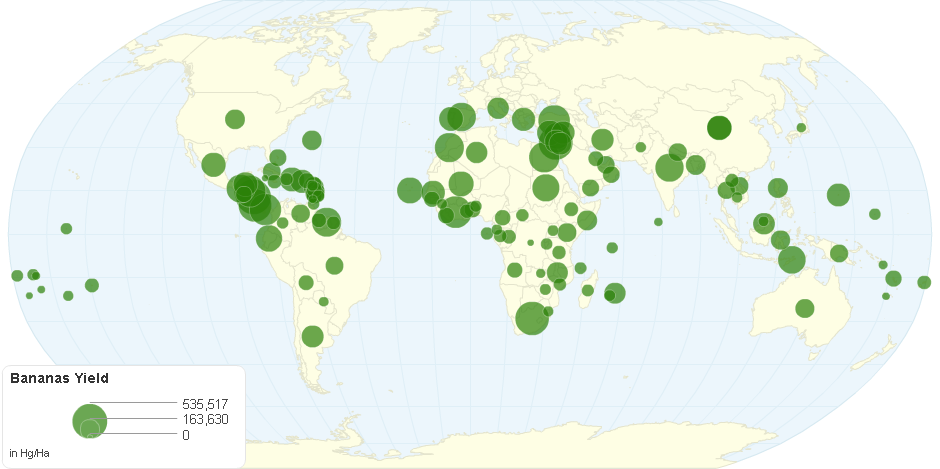This chart shows Bananas Yield By Country.
The banana is an edible fruit, botanically a berry, produced by several kinds of large herbaceous flowering plants in the genus Musa.In some countries, bananas used for cooking may be called plantains. The fruit is variable in size, color and firmness, but is usually elongated and curved, with soft flesh rich in starch covered with a rind which may be green, yellow, red, purple, or brown when ripe. The fruits grow in clusters hanging from the top of the plant.
Worldwide, there is no sharp distinction between "bananas" and "plantains". Especially in the Americas and Europe, "banana" usually refers to soft, sweet, dessert bananas, particularly those of the Cavendish group, which are the main exports from banana-growing countries. By contrast, Musa cultivars with firmer, starchier fruit are called "plantains". In other regions, such as Southeast Asia, many more kinds of banana are grown and eaten.
When a banana plant is mature, the corm stops producing new leaves and begins to form a flower spike or inflorescence. A stem develops which grows up inside the pseudostem, carrying the immature inflorescence until eventually it emerges at the top.Each pseudostem normally produces a single inflorescence, also known as the "banana heart".
A banana plantation is a commercial agricultural facility found in tropical climates where bananas are grown.Banana plantations, as well as growing the fruit, may also package, process, and ship their product directly from the plantation to worldwide markets.
10 years ago

